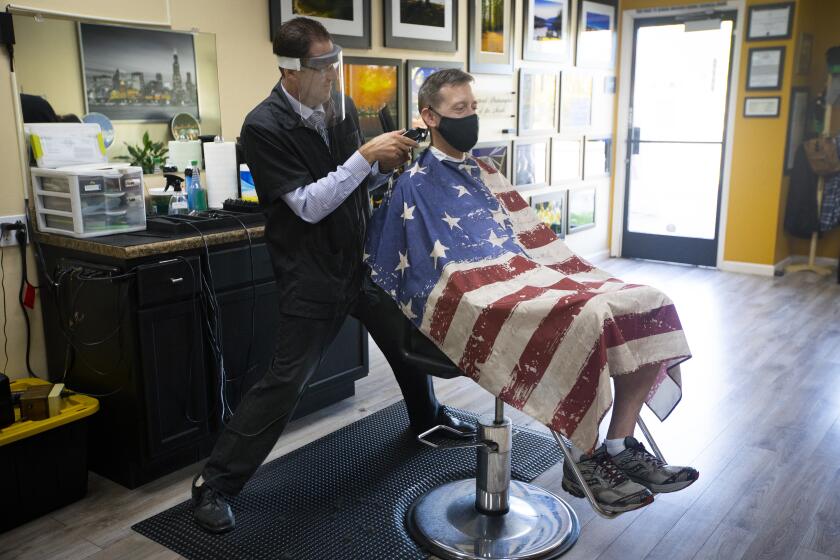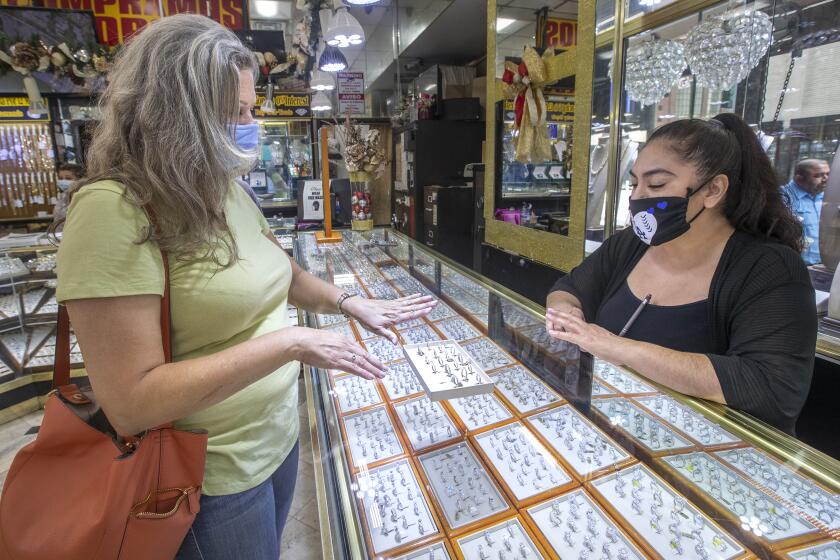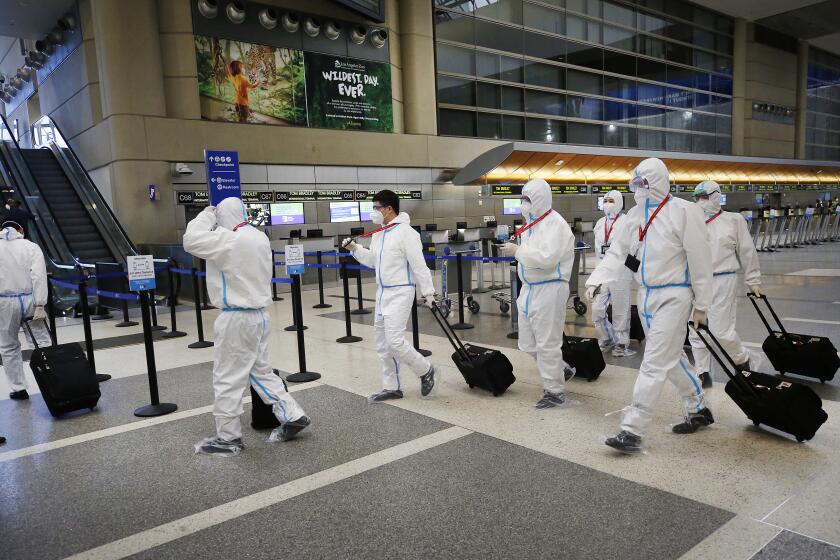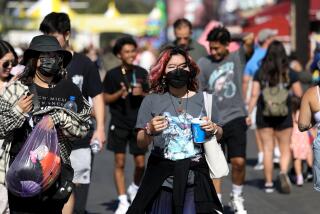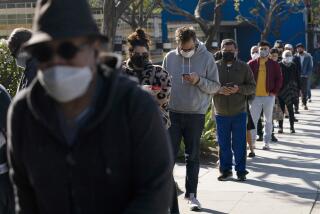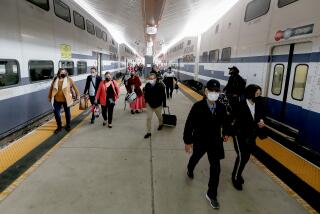L.A. County aims to reopen by July 4, but must rely on data and science, official warns
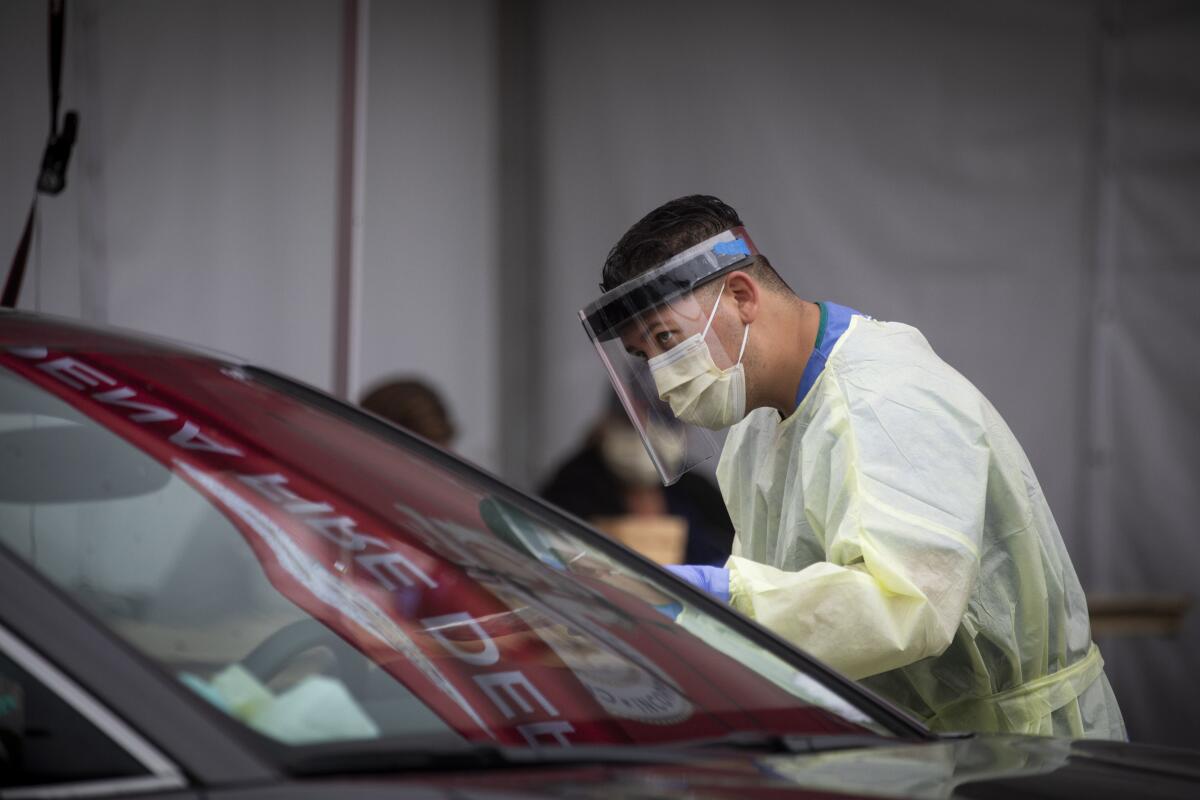
- Share via
Los Angeles County officials’ newest goal is to more fully reopen the economy by July 4, officials said Tuesday.
The mission is to safely reopen retail businesses, restaurants and malls. But getting there will be slow going.
“We have to do a lot of things right so we can actually get to that date,” L.A. County Public Health Director Barbara Ferrer said. “I think the reality is that we are going to really aim together to get there as quickly as possible, but we’re going to pay attention to the data and science.”
Visual look at the third phase to reopen California amid the coronavirus outbreak.
The goal was announced during a Board of Supervisors meeting Tuesday, as business leaders lamented the toll the COVID-19 pandemic has placed on the economy, saddling business owners and employees with lost work and pay.
Also Tuesday, Sacramento County announced it has been given the go-ahead by the state to reopen dine-in restaurants. County officials said their reopening plan differs slightly from the state’s road map: religious services and ceremonies such as graduations can be held only via drive-through, and outdoor gatherings — such as weddings, funerals and family gatherings — can have a maximum of 10 people with strict social distancing.
Citing county officials, Sacramento Mayor Darrell Steinberg tweeted that the county would be able to “reopen some offices, small shops and restaurants” by Friday.
“It’s not just about allowing the businesses to open; it’s also about the customers,” he said in a media briefing. “People on the one hand are going to be understandably cautious, as they should be. But I know that I’m going to try to lead the way. I will go out to eat. I’ll eat al fresco.”
But in Los Angeles County — the center of coronavirus cases in California, with more than 1,900 deaths — officials have long said reopening the economy will be more difficult than in other parts of the state less hard hit. The idea is to avoid a reopening that occurs too quickly and causes more outbreaks.
During a media briefing, L.A. Mayor Eric Garcetti said pet grooming and training services, as well as car washes, would be allowed to open immediately.
Customers may drop off and pick up their pets outside the store, but like other retail, only employees will be allowed to enter the building, Garcetti said. Mobile pet grooming services must follow physical distancing protocols, he added.
The mayor reiterated the importance of staying home, practicing social distancing, hand washing and wearing face coverings.
“The more that you keep your physical distance, the quicker we’ll be able to return to even more spaces,” he said, adding that studies indicate that the virus’ spread could be slowed just from people covering their faces in public.
On average, over the last seven days, “we have seen about 940 new cases diagnosed each day,” Garcetti said.
Other measurements — such as hospitalizations — have been trending downward.
Officials have also been aware of the devastating economic toll the stay-at-home orders are taking.
According to Bill Allen, president of the L.A. County Economic Development Corporation, more than 1 million unemployment claims have been filed in the county, with restaurants and retail industries hit the hardest.
The continued easing of restrictions does not mean life has returned to normal, county leaders cautioned. Parties and gatherings are still not permitted, and social distancing practices are still mandated.
“I have a great deal of concern that people are not listening to that message,” Supervisor Hilda Solis said.
The reopening news coincides with the announcement by county health officials of another milestone in the COVID-19 pandemic: an additional 76 deaths and 1,183 new confirmed cases.
The daily increases come a day after a study suggested that substantially more people have been infected by the coronavirus than what Los Angeles County’s confirmed case count shows, backing previous findings from preliminary serology findings reported last month.
The study tested 865 people for the coronavirus antibodies during the second week of April, when roughly 8,430 cases of the virus had been confirmed in L.A. County. The findings suggest that the prevalence of antibodies among residents was 4.65%, an estimate that implies about 367,000 adults had been infected by the virus at the time. The preliminary findings reported last month estimated that 4.1% of county residents had contracted the virus.
The ongoing study from USC and L.A. County’s Public Health Department was published Monday in the Journal of the American Medical Assn.
The study indicates that the county has a long way to go before herd immunity is established. Neeraj Sood, the study’s lead author, said the findings also suggest that contact tracing methods to track and limit the spread of the virus could be challenging.
Contact tracing — the process of identifying individuals who may have come into contact with an infected patient — is one of the state’s requirements before counties can expand their reopenings.
Samples were taken from a random group of people in a 15-mile radius of eligible testing sites. Two tests were inconclusive because of faulty kits. Of those whose tests were used, 60% were women, 55% were ages 35-54, 58% were white and 43% had yearly household incomes greater than $100,000.
The latest maps and charts on the spread of COVID-19 in Los Angeles County, including cases, deaths, closures and restrictions.
More than 39,500 L.A. County residents have tested positive for the virus — a number that accounts for the bulk of the state’s total of nearly 82,000 infections. But officials have long warned that confirmed cases do not represent the true totality of the virus’ spread.
As testing capacity has increased, so has the number of confirmed cases. But to date, only roughly 358,000 of the county’s 10 million residents have been checked. Of those, 9% have tested positive.
The county continues to ease certain restrictions to restore the economy, while stressing the need for residents to maintain social-distancing practices. Currently, most retail stores and restaurants allow curbside pickup, trails and parks have reopened, and active recreation is allowed at the beaches. Face coverings are still required, while gatherings are not permitted in the county.
Although several counties have been given permission for dine-in service and in-store shopping — and more counties are making cases for further reopening — the grip the coronavirus has on L.A. County is holding fast.
Counties no longer will be kept from loosening the shutdown rules if they have recorded COVID-19 deaths in the previous two weeks.
“We’re many parts, and every part of the state of California is unique and distinctive,” Gov. Gavin Newsom said Monday when asked about the state’s patchwork of modifications. The governor noted that urban areas such as L.A. County and the Bay Area may not be ready to move as quickly as other communities.
But there have also been positive signs.
As L.A. County found itself in a coronavirus crisis in March, it became clear the highly infectious disease was surging out of control, with every one person testing positive for the virus infecting an average of 3½ other people.
Last week, L.A. County officials released data showing remarkable progress: The infection rate has fallen. Instead of every patient infecting an average of more than three other people, every infected person in L.A. County now infects just one other person.
Among L.A. County public health experts, this number is called “R,” which stands for the effective transmission number of the disease. This number can change when the public takes steps to change behaviors, such as adhering to a stay-at-home order.
Visual look at the third phase to reopen California amid the coronavirus outbreak.
The fact that the disease was spreading from one infected person to more than three others represented “a high rate of spread, much faster than what is seen, for example, with seasonal influenza,” Dr. Christina Ghaly, director of health services for L.A. County, said at the time.
Officials believe the drop is tied to stay-at-home orders imposed in late March.
“This represents tremendous progress, and we should all be very proud. It is also what allows us to start easing health officer orders and the restrictions that we’ve all been living with for the past several weeks. Safer at Home bought us time,” Ghaly said.
“It allowed our healthcare system to become more prepared. It allowed time for testing to be ramped up. It allowed time to prepare to do more contact tracing efforts, and it showed the power of what we can all do to protect ourselves and one another.”
Last week, L.A. County officials released data that showed coronavirus infection rate had fallen. But it needs to continue falling to avoid danger.
More to Read
Sign up for Essential California
The most important California stories and recommendations in your inbox every morning.
You may occasionally receive promotional content from the Los Angeles Times.
